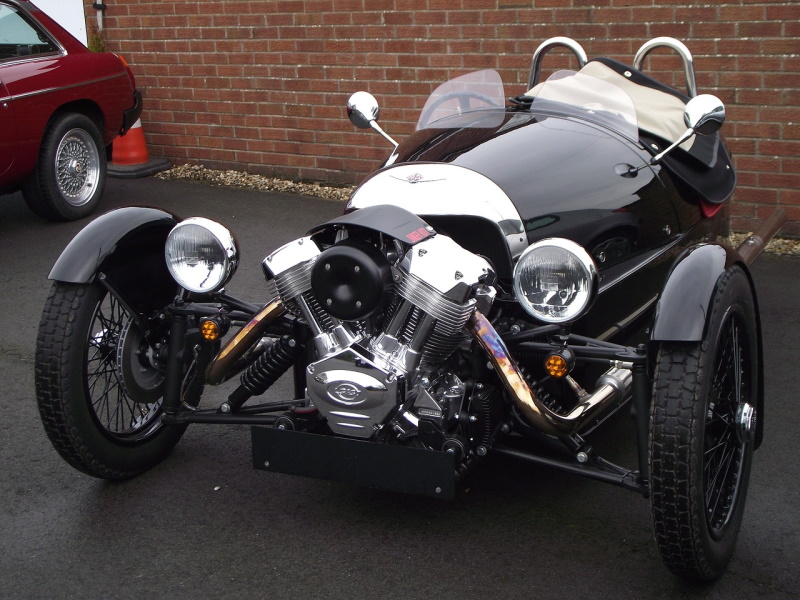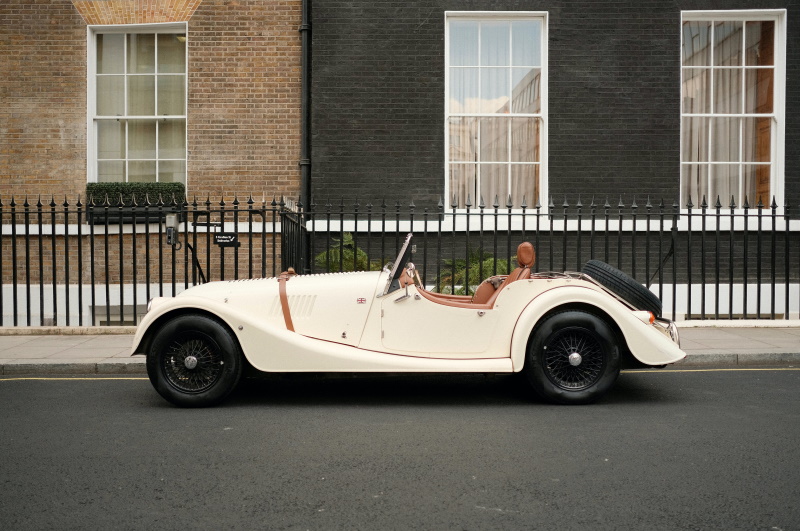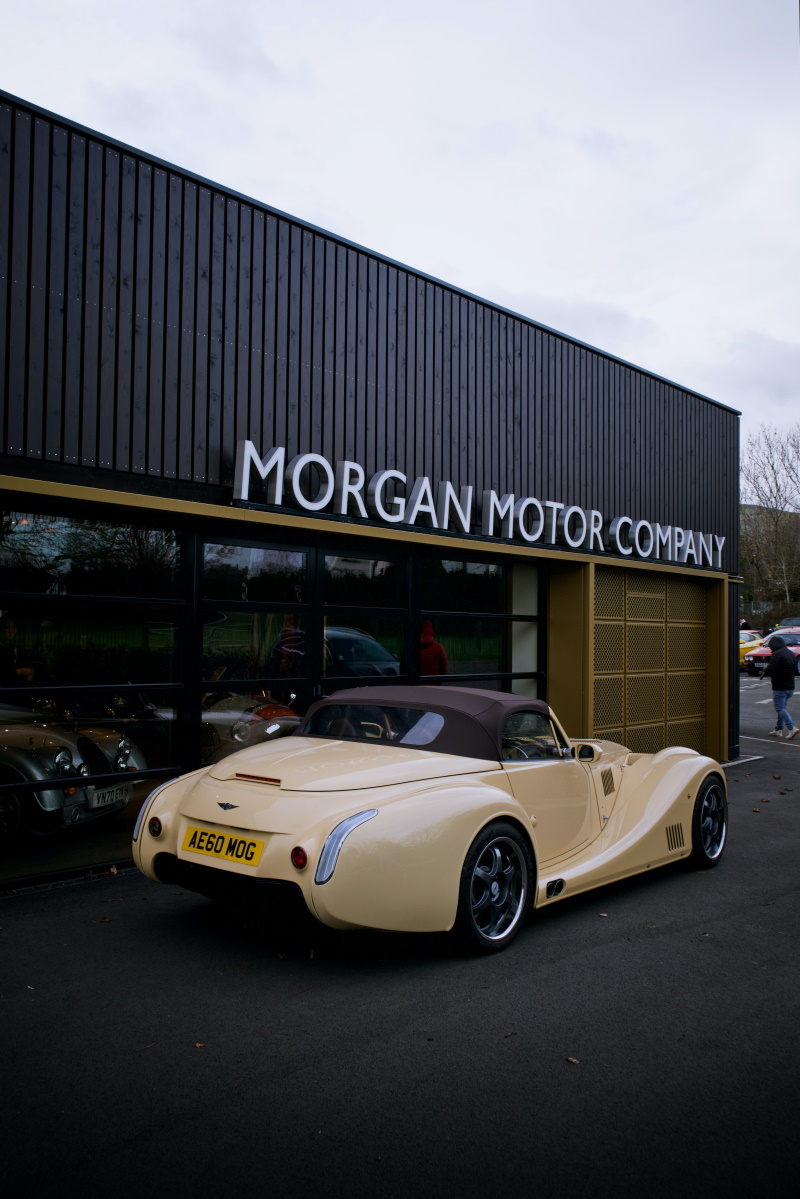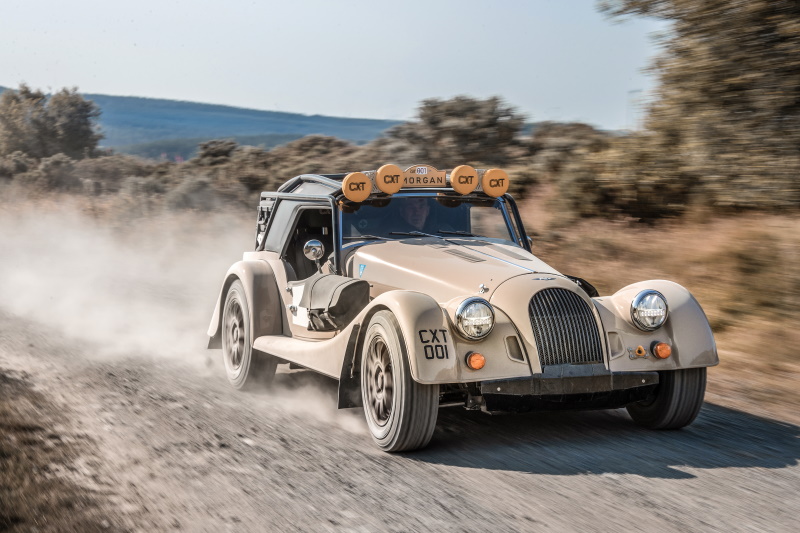by Michael Satterfield - 01/19/2023
The Morgan Motor Company is a British car manufacturer that has been producing hand-built sports cars for over 100 years. Founded in 1910 by Henry Frederick Stanley Morgan, the company has a long and storied history that has seen it survive wars, economic downturns, and the rise of modern mass-produced vehicles.
As the company grew Morgan began to focus more on producing four-wheeled vehicles, the first four-wheeler the 4/4 was introduced in 1936. Morgan had experience producing four-wheeled cars as a coach builder, building custom bodies on chassis from other manufacturers like Alder. Morgan's 4/4 featured a powerful four-cylinder engine and a sleek, aerodynamic body that was designed to be both functional and beautiful. It quickly became one of the most popular sports cars of its time, and it set the stage for the many successful models that would follow. The F-series three-wheeler would end production in 1952 and it would take 60 years for enthusiasts to get the thrill of driving a new Morgan 3-Wheeler again, (more on the 3-Wheeler later).
The 4/4 was powered by a 1,122cc Coventry Climax engine that produced just 34 horsepower. Several different versions of the 4/4 were produced including a two-seater, four-seater, and drophead. Later versions of the 4/4 were powered by a Standard Motor Company 1,267cc engine which produced 39 horsepower. In 1938, Morgan took on the Circuit de la Sarthe, with Miss Prudence Marjorie Fawcett and Geoffrey White behind the wheel. They finished 13th overall out of 42 starters, but second in their class, a strong finish for a first-year Le Mans attempt by both Miss Fawcett and Morgan. Morgan sold replicas of her race car with cycle fenders, a fold-down windscreen, and a single spare wheel. Miss Fawcett would return the next year as a team owner, with Geoffrey White and Dick Anthony behind the wheel of the same car, they would come in 15th.
Morgan would return post-war with the Morgan Plus 4 in 1950, sticking to the traditional styling that was quickly going out of mainstream fashion. The Plus 4 would remain in production from 1950-1969, before being revived from 1985-2000, with Fiat and Rover drivetrains, in 2004 a Ford four-cylinder found its way under the hood. In 2014, the Plus 4 limited edition was re-introduced as the Plus 4 Super Sports, only 60 were produced all of which were right-hand drive.
1962 would be a banner year for Morgan Motor Company with their first and only GT class victory at Le Mans, with Chris Lawrence and Richard Shepherd-Barron driving a Plus 4. Morgan would produce a two-seat Plus 4 Competition model in 1966, 42 of them would be built and only 11 are known to exist today.
Perhaps inspired by the attempt by Sprinzel Lawrence Tune Racing to build streamlined race cars on the Morgan chassis in 1964. Morgan attempted to modernize their bodywork that same year with the Plus 4+ a fiberglass coupe body that had better aerodynamics and a more contemporary style. However, Morgan loyalists didn't care for the design and modern sports car drivers didn't care for the aging chassis, just 26 were built when production ceased in 1967.
In 1968, Morgan decided to stuff a Rover V8 into its Plus 4 chassis, creating the Plus 8, with the same weight as the four-cylinder and 190hp, the Plus 8 was the fastest production Morgan to date when it was introduced. The Rover-powered Plus 8 would remain in production until 2004, by the end of production the engine had grown to 4.6 liters and the car came with a five-speed manual transmission.
With the Rover engine discontinued, Morgan would cease production on the Plus 8 until 2012 when it was reintroduced with a 4.8 liter BMW V8 and the choice of a six-speed automatic or manual gearbox. By far one of the more interesting variants of the modern Plus 8 was the Plus 8 Speedster which was only offered in 2014, and the Plus 8 GTR of which just nine were built as a special edition in 2021.
2004 saw the release of the Morgan MK I Roadster, powered by a Ford 3.0 V6 engine and was offered with a two or four-seat configuration. The MK I Roadster would remain in production until 2019 and offered the same classic Morgan styling from the 1950s with modern conveniences like standard air conditioning.
2004 saw the release of the Morgan MK I Roadster, powered by a Ford 3.0 V6 engine and was offered with a two or four-seat configuration. The MK I Roadster would remain in production until 2019 and offered the same classic Morgan styling from the 1950s with modern conveniences like standard air conditioning.
Morgan has made a few attempts to enter the EV space with the first being the Morgan Plus E, however, only a prototype was produced and shown at the 2012 Geneva Motor Show. However, no production model was ever produced or attempted.
The new CX-Generation platform also allowed the revival of the iconic and almost unchanged-looking Morgan Plus Four, which was to be unveiled at the 2020 Geneva Motor Show, which was canceled due to COVID-19. The new Plus Four is powered by a 2.0-liter BMW four-cylinder engine that produces 255 horsepower and can be ordered with a 6-speed manual transmission or an 8-Speed paddle-shifted automatic.
In 2021 Morgan released the limited edition CX-T an overland-ready Morgan. Based on the Plus Four the new CX-T was prepped by the legendary racing shop Rally Raid UK, the team behind some of the most successful Dakar rally cars ever built. The project highlights the durability of Morgan’s new CX-Generation platform which the Plus Four is based on. The exterior of the CX-T is designed to maximize gear-carrying capacity, and provide the occupant protection necessary for extreme environments. Most prominently, the rear panel of the vehicle has been replaced with an equipment rack, with unique side body panels designed to be reminiscent of the classic four-seater Morgan.
While Morgan ended the production of their iconic 3-Wheeler in 2021, after a nine-year production run, in early 2022 they presented the Super 3. A much more modern version of the three-wheel Morgan, powered by a 1.5-liter Ford 3-cylinder engine and a 5-speed manual transmission from the Mazda MX-5 the Super 3 shares more than the four-wheel Morgans than ever before, including much of the chassis that is used in the Plus Four and Plus Six.
Thanks to new laws for boutique automakers, we are expecting to see Morgan cars back for sale in the US in 2023, while Morgan may still handmake all of their vehicles in Malvern, the US is still an important market for the brand and many enthusiasts are excited about the opportunity to own a brand new Morgan once again.
Throughout its history, the Morgan Motor Company has remained true to its roots, continuing to hand-build its cars using traditional techniques and materials. This commitment to craftsmanship and quality has helped the company to survive and thrive for over 100 years, and it's one of the things that sets Morgan apart from its competitors.














_websize.jpg)










